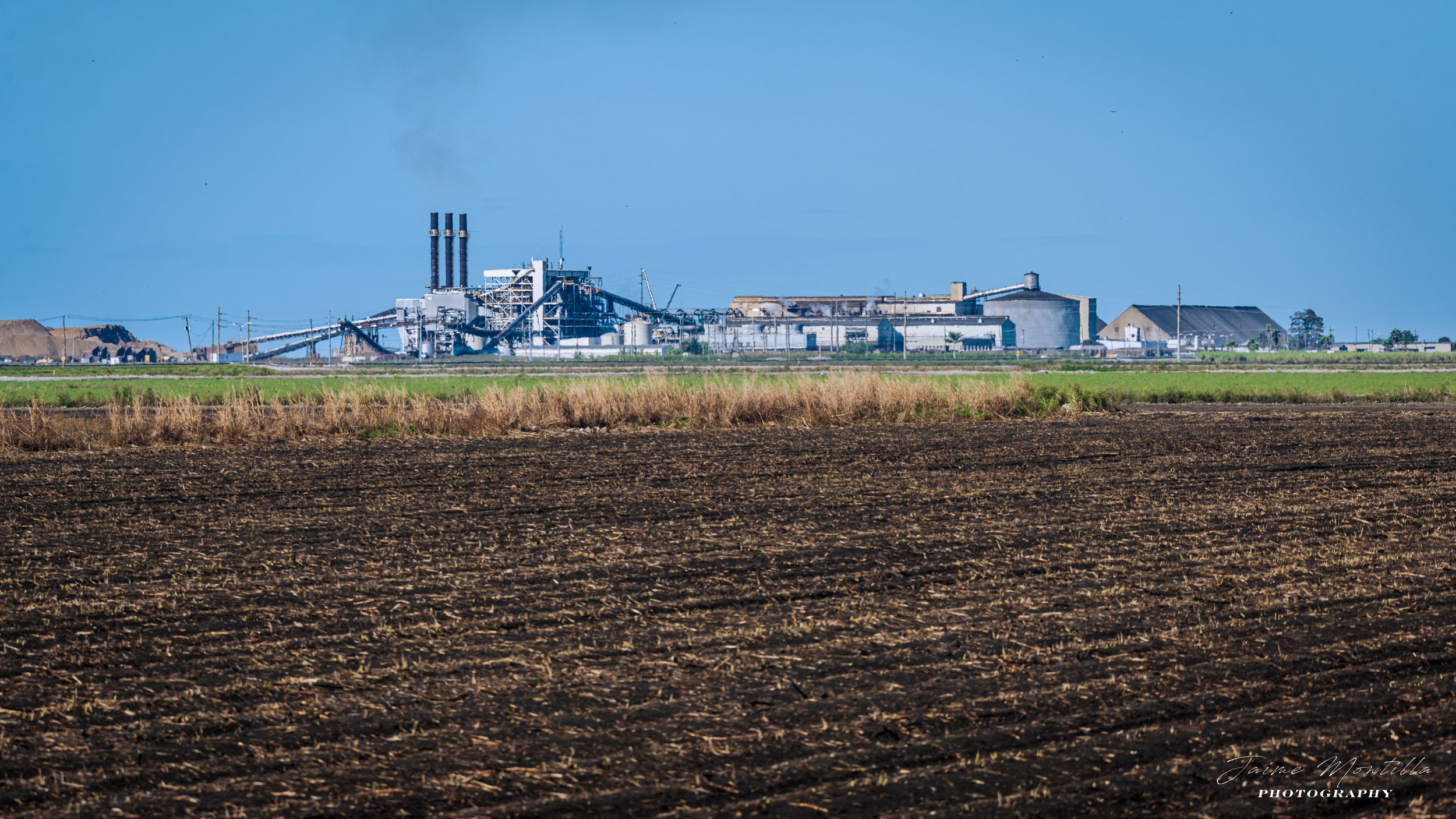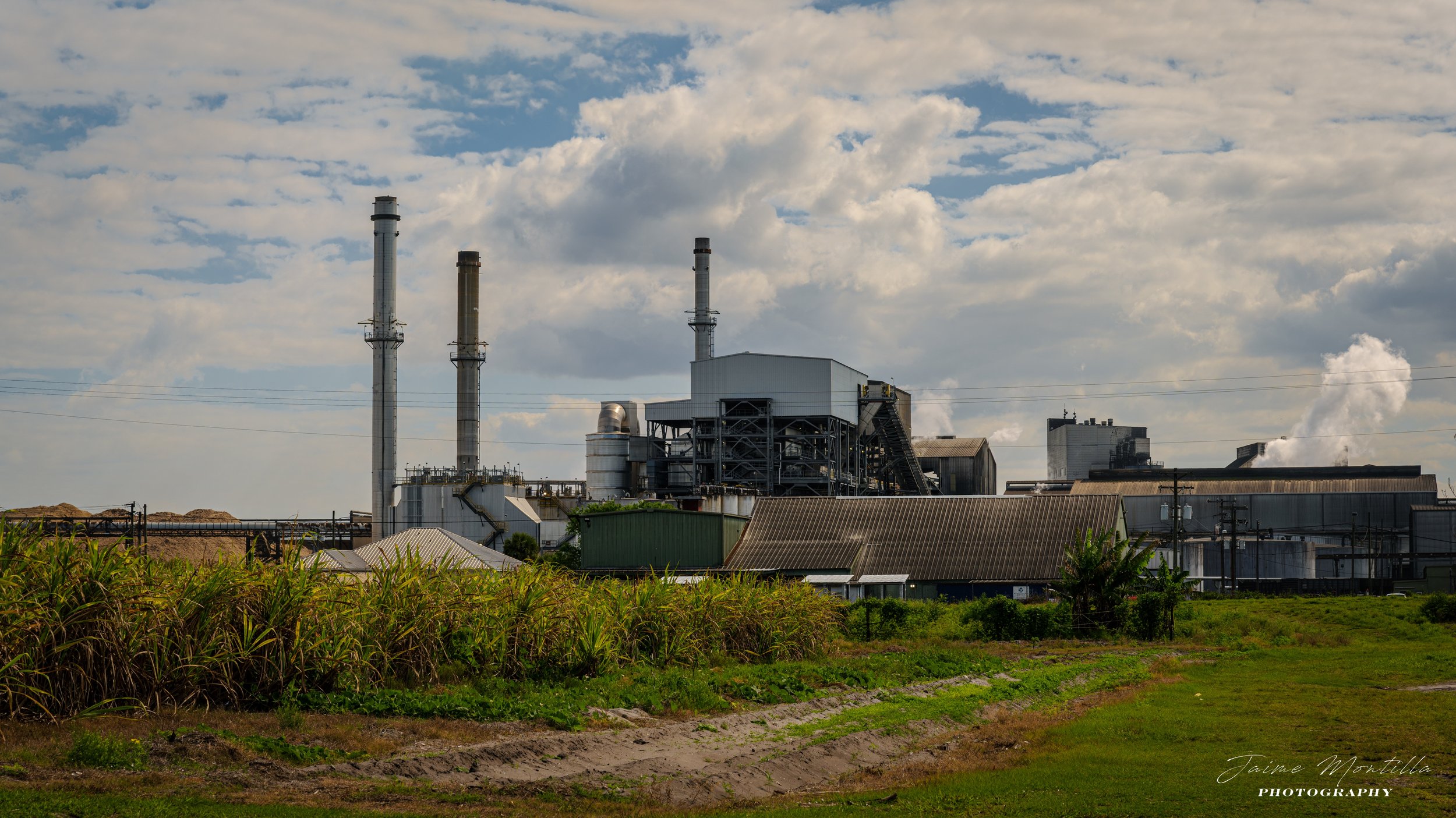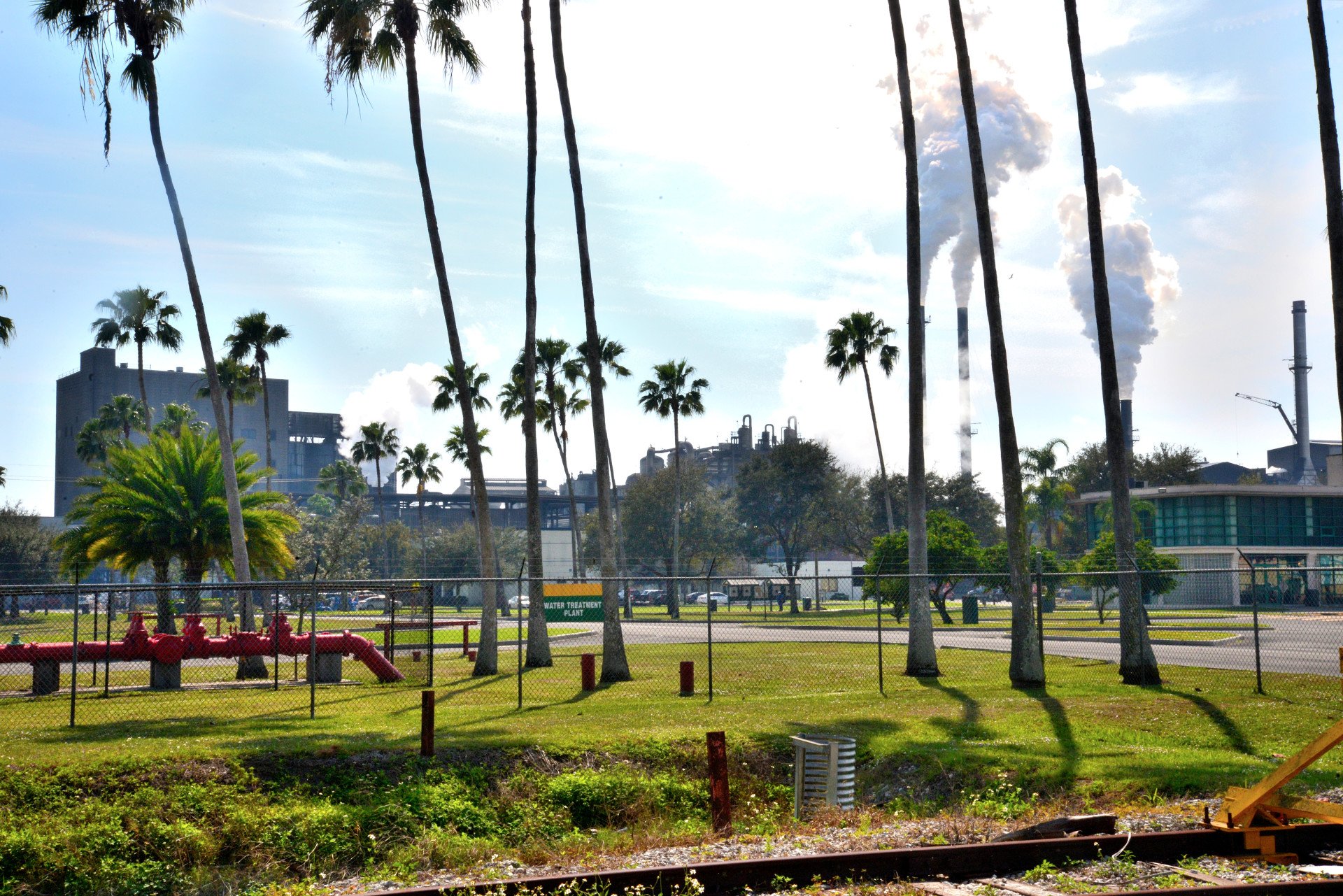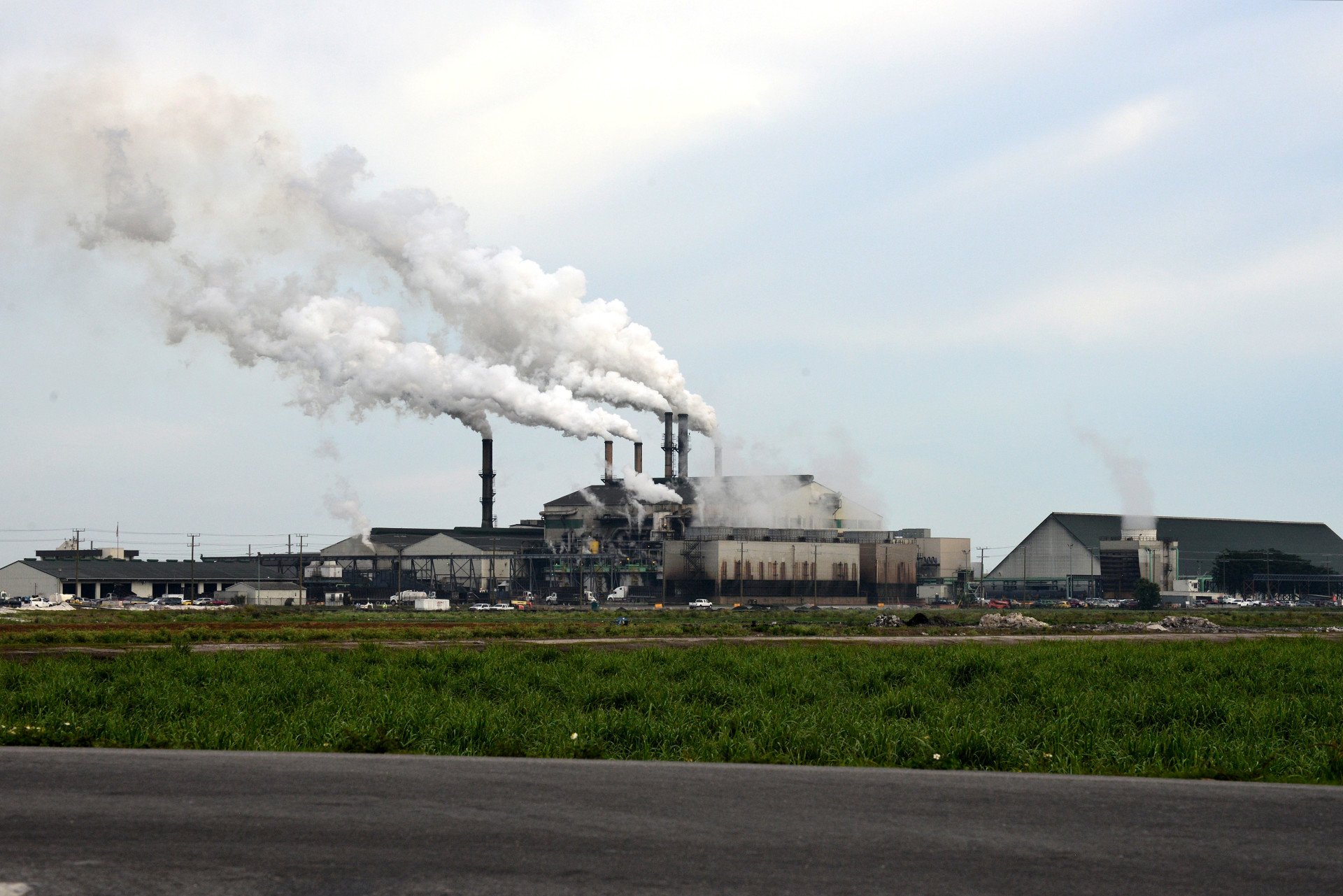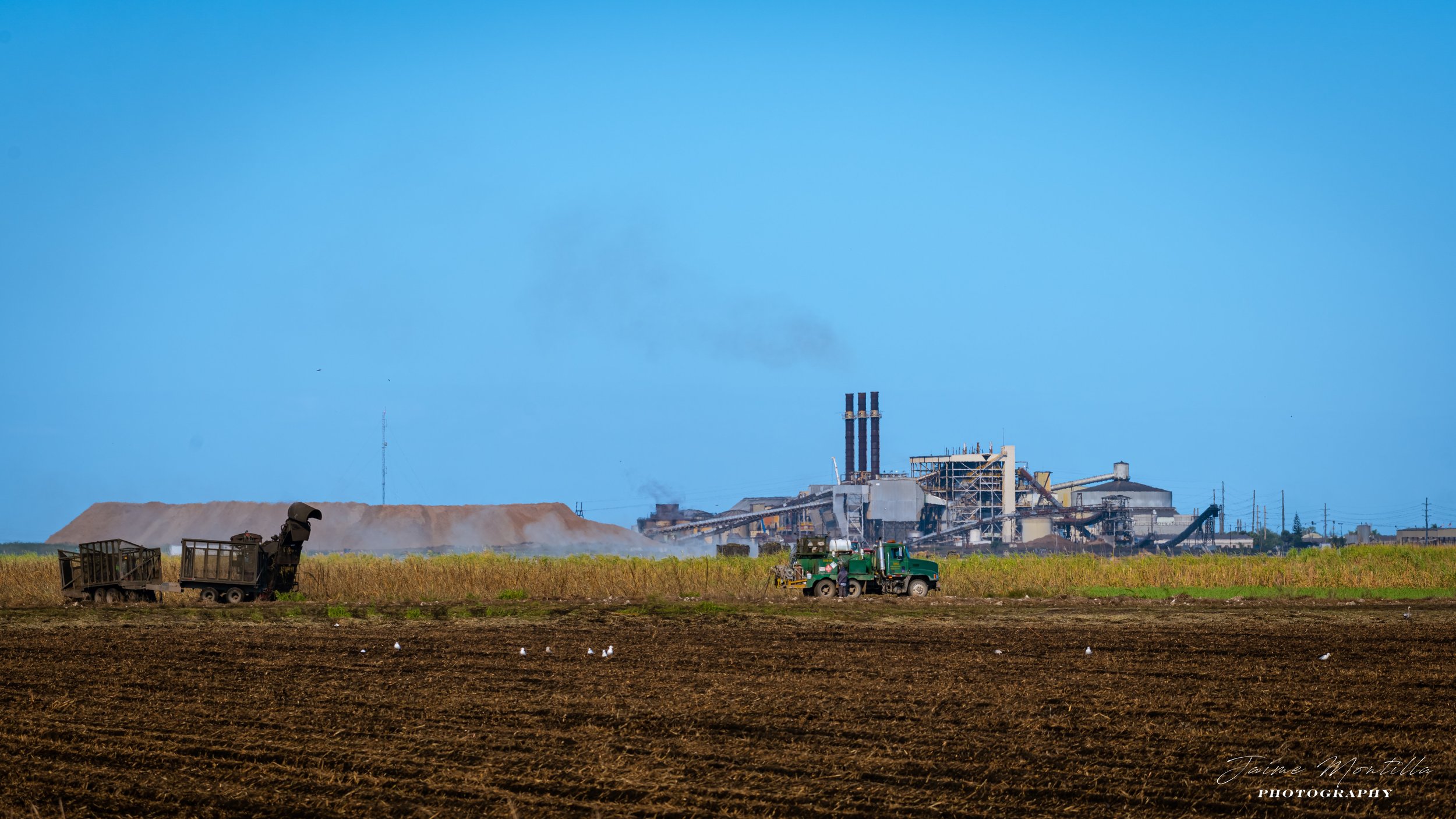
Florida Sugar Industry
Florida Spanish colonial governor Pedro Menendez de Avilés brought sugarcane to St. Augustine in 1565, but sugar production in Florida did not begin until 1767 at the New Smyrna Colony established by Andrew Turnbull. The American Revolution disrupted the sugar industry in Florida, attempts following the end of the Revolutionary War to develop commercial operations failed in the early 1800s because of unsuitable soils and inclement weather. This failure to launch the sugar industry in central Florida moved pioneers further south during the late 1800s and early 1900s. The sugar industry in Florida was finally established in the 1920s in the general area on the southeastern shores of Lake Okeechobee.
The British owned Florida for only twenty years between 1763 and 1783. It was during this time that the first major sugarcane operations were established in East Florida. Between 1763 and 1836, most of the sugar mill sites were established in Volusia and Flagler Counties. The British wanted to turn the territory into a productive colony by building profitable plantations along the St. Johns River. In 1764, the British Parliament assigned £500 as bounty for cultivating silk, cotton and indigo in East Florida and authorized generous land grants for citizens who stepped forward to develop these industries. Colonial authorities handed out the land grants to British subjects willing to try their hand at planting.
In what was known as the Second Spanish Period, Florida again became part of Spain in 1783 and was so until 1821 when the territory became part of the United States as a result of the Adams-Onís Treaty. As planters from Virginia and the Carolinas began moving into the northern part of Florida, they were anxious to cultivate new and profitable crops that would solidify their fortunes and those of the new territory. Settlers such as future Florida Governor Thomas Brown, William Wirt, William Nuttall, John and Robert Gamble, and William Bailey invested large sums of money in the equipment necessary to establish sugarcane plantations and build sugar factories.
Freezing of sugarcane in the fields diminishes the ability to produce crystallized sugar. This was a major problem for early sugarcane growers who had big issues guessing when deciding the right time to harvest their sugarcane crops. Over time, the risks associated with growing sugarcane became too great for most planters to invest money in the venture. Plantations continued to produce smaller amounts of sugar for home and local use, but large-scale cultivation of sugarcane in Florida was for the most part abandoned after the Second Seminole War.
It was not until 1886, some twenty one years after the end of the Civil War, that Hamilton Disston would construct a central sugar factory and resume large scale sugar planting in Florida. It would take almost another twenty years after the Disston Sugar Mill shut down in 1901 that a couple of short lived sugar ventures signaled the rebirth of the Florida sugar industry.
The publication Facts About Sugar edition of July 1, 1922 published an interview with Jules Burguieres, member of a well known Louisiana sugar family and resident at the time in West Palm Beach. Mr. Burguieres said he himself was producing a very considerable quantity of cane on lands near WPB and expressed faith in the development of sugar manufacturing in a large scale in Florida. He said that next year (1923) three plants with a combined capacity of some 2,000 tons of cane per day will be in operation, including the plant of the Pennsylvania Sugar Co., that of the Florida Sugar & Products Co. and that of the Moore Haven Sugar Co.
On November 12, 1919 the Pennsylvania Sugar Company was registered to do business in Florida and began planting sugarcane along the Miami Canal in Pennsuco, not too far from what today is Hialeah. In May 1923 it completed construction of a sugar mill relocated from Texas. The mill operated for only two years because of limited availability of sugarcane to process due to continuous flooding in the cane fields. The mill was sold in 1927 to the Southern Sugar Co. and relocated to Clewiston.
In early 1921 the Moorehaven Corp. acquired Moorehaven Syrup Co. and its four hundred twenty five acres of sugarcane fields and established a sugar mill in the upper Everglades which went bankrupt due to high expenses and poor water control in the cane fields.
In late 1922 a second sugar mill was erected in Palm Beach County property of the Florida Sugar and Food Products Co. The project was the result of negotiations between the State of Florida and Bryant & Anderson and Assoc. of Chicago and Lake Worth and the William A. Otis of Palm Beach Farms Co.
Florida's sugar industry began in earnest ca. 1920 when Englishman Frederick Edward Bryant with his brother Harold J. and William Greenwood started Palm Beach Farms Co. which developed the subdivision that became the cities of Lake Worth and Greenacres. The Bryant brothers together with G. T. Anderson formed the Florida Sugar and Food Products Co. at Canal Point. They bought about eight hundred acres of land and in 1921 began construction of the first commercial sugar house in the Everglades, producing the first raw sugar in 1923. Because of financial difficulties due to high start-up costs and problems with flooding in the cane fields, the Florida Sugar and Food Products Co. was reorganized as the Florida Sugar Co.
In 1925 Swedish immigrant Bror G. Dahlberg, head of Celotex Co. of Chicago, was interested in expanding the company's source of bagasse used in the manufacturing of wallboard. With plant desease problems at its sugar plantations in Louisiana, Dahlberg established the Southern Sugar Co. when he bought fifteen thousand acres of land along the southwest lakeshore of Lake Okeechobee and absorbed the faltering Florida Sugar Co. Dahlberg increased his land holdings to one hundred thirty thousand acres in 1925 when he acquired land from John J. O'Brien and Alonzo Clewis who had acquired them to establish the town of Clewiston. Dahlberg moved the Florida Sugar Co. sugar mill from Canal Point to Clewiston and in 1927 acquired and moved the Pennsylvania Sugar Company mill located west of Miami creating the Clewiston Sugar House on January 14,1929.
Even though Dahlberg hired sugar men like B. A. Bourne who had experience in the sugar industry in Puerto Rico and P. G. Bishop who most recently had been Vice President of the Cuba Cane Sugar Corp. in Cuba, in the fall of 1930 Southern Sugar Co. was forced into receivership due to a decline in sugar prices, crop losses due to flooding and its inability to raise new capital due to the stock market crash. On April 29, 1931 General Motors co-founder and Vice President Charles Stewart Mott (68%) and Clarence & William Bitting (10%) acquired majority interest in Southern Sugar Co. for $900,000 plus the assumption of certain debts in a court auction sale and renamed it US Sugar Corp. During Clarence Bitting presidency at US Sugar Corp. (1931-1945), its plantations accounted for 96% of Florida sugarcane production.
In 1918 Frank W. Heiser and other farmers in the Fellsmere, FL area began experimenting with sugarcane. By 1931 Heiser organized the Fellsmere Sugar Co. which had enough sugarcane seed to plant its 1,000 acres of land and enough financial backing to build a sugar mill. The Fellsmere Sugar Mill was built in 1932 by men associated with the Punta Alegre Sugar Company in Cuba, it processed two million pounds of high grade raw sugar in its first season in 1933. Heiser built the first granulated sugar refinery in Florida in 1935. Under the Florida Crystals brand, five and a half million pounds of refined sugar were sold in 1936. In 1937 Heiser reorganized the Fellsmere Sugar Co. as a cooperative known as the Fellsmere Sugar Producers Association. In 1943, Puerto Rican sugar producer Jose Adalberto Roig Guzmán, son of Antonio Roig Torrellas owner of Central Roig acquired the Fellsmere Sugar Mill.
In 1946, ready for the 1947 grinding season, the Okeelanta Growers and Processors Cooperative bought the machinery of the old Playa Grande sugar mill in Vieques, PR from Miguel Angel Garcia-Mendez and established the third sugar mill in the Everglades in the town of South Bay. Members of the cooperative included Pedro Juan Serrallés Galiano whose family owned Central Mercedita in Ponce, PR. In 1949, the Columbia Bank for Cooperatives of Columbia, SC foreclosed and a court appointed receiver operated the plantation and sugar mill until 1952 when all the foreclosed property was sold to the Okeelanta Sugar Refinery, Inc., incorporated July 2, 1952 and associated with the sugar interests in Cuba of Garcia-Diaz & Co. In 1958, Okeelanta Sugar Refinery, Inc. acquired the Fellsmere Sugar Mill and the lands owned by the Fellsmere Sugar Producers Association.
In 1964 the South Porto Rico Sugar Company acquired the Okeelanta Sugar Refinery, Inc. and in 1965 closed the Fellsmere Sugar Mill after thirty three years of operation. In 1967, Gulf+Western acquired the South Porto Rico Sugar Company and its properties in Fellsmere. G+W then proceeded to shut down the remaining farming operations in Fellsmere and in 1978 sold the land to Sun-Ag Inc.
In 1984 Gulf+Western sold Okeelanta Sugar Refinery, Inc., including 90,000 acres of land and the Okeelanta Sugar Mill to the Okeelanta Corp. whose principal shareholders were and still today are the Fanjul Brothers who also own Osceola Sugar Mill in Pahokee. Okeelanta Corp. was incorporated in 1984 and operates as a subsidiary of Florida Crystals Corp. It owns 67,000 acres of land and the Okeelanta Sugar Mill.
The sugar industry in Florida saw great expansion as a result of the 1959 Cuban revolution and 1961 embargo when sugar from the island was no longer available and a number of experienced sugar men left Cuba eager to start over. At the time of the Cuban revolution there were only some 55,000 acres planted with sugarcane yielding about 150,000 tons of raw sugar annually processed at the three heretofore mentioned sugar mills; US Sugar Mill, Okeelanta Sugar Mill and Fellsmere Sugar Producers Association. In the 3 years following the revolution, land used to grow sugarcane grew to 140,000 acres producing approximately 400,000 tons of raw sugar. This boom resulted in several new sugar mills, to wit;
Florida Sugar Corporation - Belle Glades. Was established in 1961 with a mill brought from Louisiana. It was headed by David M. Keiser who was Chairman of the Cuban-American Sugar Corp. and President of the New York Philharmonic Symphony Society from 1956 to 1963 and board chairman from 1963 to 1970. It was acquired by the Talisman Sugar Company and shut down in 1971
South Florida Sugar Company, Inc. - Incorporated February 27, 1961, part of the original group of shareholders included Puerto Rican Jacobo Cabassa who owned Everglade Farms, one of the largest land holdings south of Lake Okeechobee. Its original machinery was from Central El Ejemplo in Puerto Rico. By the close of the 1964 harvest season South Florida Sugar Corp. was acquired by the Talisman Sugar Corporation
Osceola Farms Co. - Pahokee. Started as a four thousand acre sugarcane plantation acquired by Alfonso Fanjul Sr. and Czarnikow-Rionda for $640,000 in 1960. In 1961 they acquired the machinery of a 2,500 ton sugar mill in Louisiana, brought and installed it at the plantation and began processing its own sugarcane
Bryant Sugar Mill - Bryant. When it opened by US Sugar in 1962, it was the most modern mill in the world. Was shut down in 2007 and its operations consolidated with the US Sugar Mill in Clewiston
Sugarcane Growers Cooperative of Florida - Belle Glades. Established in 1960 is a cooperation of forty five grower members who owned approximately seventy thousand acres dedicated to growing sugarcane. One of the members was Czarnikow-Rionda who provided 15% of the financing and secured a management contract to run the mill and supply 120,000 tons of sugarcane from its cane fields. The first grinding season at the Glades Sugar House was 1962
Talisman Sugar Corporation - South Bay. Was established in 1962 when four major investors headed by Fernando de la Riva and eleven other Cuban expatriates backed by by Henry Ford II paid $21.8 million for sixteen thousand eight hundred acres of muck land. By 1963 Talisman was struggling financially and was rescued by former US Ambassador to Peru and Brazil William D. Pawley. The St. Joe Company acquired Talisman from Pawley in 1972 and operated it until 1999 when it contracted with the US Government to sell the mill and land for $133.5 million as part of the Everglades Restoration Project
Glades County Sugar Growers Cooperative Association - Moore Haven. Was incorporated August 18, 1961 to build and operate a sugar mill which began producing sugar in 1962. It started when Cuban immigrants Julio C. Iglesias, former president of Shell Oil Co. in Cuba and Dr. Carlos Sales Humara acquired two hundred eighty thousand acres of land, one hundred fifty thousand to grow sugarcane. The association consisted of about fifty five members with Iglesias and Sales having a 25% controlling interest. The mill was purchased by Gulf+Western and closed in 1977
Atlantic Sugar Association - Belle Glades. A farmers cooperative mill established in 1963 with Francisco Pons as administrator and backed by Allis-Chalmers and the Columbia Bank for Cooperatives. On September 9, 2005 Atlantic Sugar Association, Inc. merged into Atlantic Holding LLC and its operations became part of the Okeelanta Corporation.
Today, Palm Beach, Glades, Hendry and Martin counties surrounding Lake Okeechobee, are at the center of the sugar industry. Growing from approximately fifty five thousand acres used to grow sugarcane prior to the Cuban embargo of 1961, currently land used to grow sugarcane is about four hundred thousand acres producing about 1,400,000 m. t. of sugar annually. The main sugar producers in Florida and their corporate owned sugar mills are:
US Sugar Mill - Clewiston, FL
Okeelanta Sugar Mill - South Bay, FL
Osceola Sugar Mill - Pahokee, Fl
Sugarcane Growers Cooperative of Florida
Glades Sugar House - Belle Glades, FL
Sugarcane grown on land owned by the sugar mills account for approximately 65% of the 13 million or so tons of sugarcane processed every year in the four mills, approximately 25% is grown by farmers belonging to the Sugarcane Growers Cooperative of Florida and the remaining 10% or so is grown by independent farmers and sold to either one of the four sugar mills. Today, approximately 50% of the sugar consumed in the US is cane sugar, sugar mills in Florida produce between 40-50% of all the cane sugar produced in the USA.
In 1998 Florida Crystals Corporation, today a subsidiary of Flo-Sun Inc., formed a partnership with the Sugar Cane Growers Cooperative of Florida to integrate sugar refining to their sugarcane growing and raw sugar manufacturing operations. To such effect they acquired the Yonkers Sugar Refinery in Westchester County, NY from Canada-based Atlantic Sugars, resulting in the creation of the American Sugar Refining Inc. In 2001 the American Sugar Refining Inc. acquired Domino Sugar from the British firm Tate & Lyle including its three refineries in the US; the Yonkers Sugar House in Yonkers, NY; the Domino Sugar Refinery in Baltimore, MD; and the Chalmette Refinery in Chalmette, LA. and its Silvertown, London plant. This acquisition resulted in the creation of what today is one of the largest sugar enterprises in the world known as ASR Group with operations in the US, Canada, Mexico, Belize, the UK, Portugal and Italy.
Pictured for this project, each one with its own page, are the remains of eleven 19th Century sugar factories and the remains of the initial settlement that started it all. Existing in the Tomoka State Park but not accesible to visitors due to its remote location and therefor not pictured, are the Mc Hardy ruins. Robert McHardy who was the son-in-law of John Bunch (see Dunlawton Sugar Mill) received a 1,000 acre land grant in 1808 requested by his wife but processed in his name after her death in 1808. The ruins include the plantation house and the sugar works. Also pictured below are the four sugar mill currently in operation.
The location of the 19th Century sugar factories and 20th Century sugar mills, active and closed, can be identified in the Maps page.
Okeelanta Sugar Mill - South Bay
Okeelanta Sugar Mill - South Bay
US Sugar Mill - Clewiston
US Sugar Mill - Clewiston
US Sugar Mill - Clewiston
Glades Sugar House - Belle Glades
Glades Sugar House - Belle Glades
Osceola Sugar Mill - Pahokee
Osceola Sugar Mill - Pahokee
